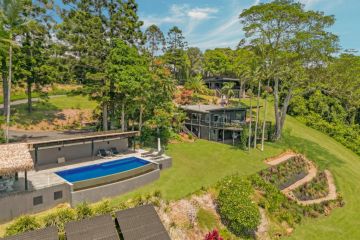Why rentvesting is more affordable than buying a home to live in (and why it’s not for everyone)
Rentvesting has been touted as an option for both first-home buyers and potential upgraders trying to climb the property ladder without sacrificing their lifestyle. But as with any investment strategy, it has its advantages and drawbacks.
Although the concept of owning one or more investment properties while renting where you want to live has been around for a long time, as we become more sophisticated in our financial and property planning and decision making, rentvesting has entered the psyche for the average property buyer.
Rentvesting is not for everyone, but many people do not even consider it, often to the detriment of their finances or lifestyle.
Maintaining an open mind to rentvesting provides you with greater choice and awareness of your options.
What are the benefits of rentvesting?
One of the beauties of rentvesting is that it does not need to be a long-term decision. It can be a stepping stone to provide you with extra time.
Rentvesting can allow you to build your portfolio by making a smart investment decision rather than one based on emotion, as is often the case when purchasing a home to live in.
It allows you to live in a superior property or location, without having to make a large financial commitment to the property so soon, or ever.
By rentvesting, investors can also retain an existing property or properties without needing to sell to purchase a long-term home.
The “try before you buy” approach means you can rent and live in your preferred location, or property style, to ensure you are happy with your lifestyle choice prior to purchasing. It also provides you with time to grow your savings or increase your surplus cash flow.
- Related: Five things I wish I knew before rentvesting
- Related: How to spot gentrification before it happens
- Related: When to compromise and when to put your foot down
Why is rentvesting more affordable?
Rentvesting is becoming an increasingly popular option in Sydney and Melbourne because it is much cheaper to live in a higher-end rental home than it is to purchase one.
This is because rental returns are generally driven by the dwelling, while capital growth is generally driven by the land. Higher-end properties normally have a higher land value, therefore the rental return as a percentage of the overall value of the property is often lower.
For example, a property below the median price range may be more likely to achieve an annual rental return of 4 per cent of the value of the property after costs, whereas a higher-end home may only receive a rental return about 3 per cent or less.
Moreover, with higher-end properties, there is often less competition from would-be tenants because fewer people can afford to live in these properties.
What to consider before rentvesting
Property ownership still outweighs the desire to rent for the vast majority of Australian’s. Our love of property means that most people are only willing to pay so much in rent before purchasing a home.
This is a key reason for why rentvesting is often cheaper than purchasing, especially when living in a capital city and looking to live in properties valued above the median price range.
But as an investment, the family home has certain advantages over other assets.
A principal place of residence is capital gains tax free. Therefore, it is the only property asset that we can sell without having to pay tax on the capital gain.
As the home is usually our most expensive asset, it can also assist with funding the transition to retirement should you decide to downsize, especially given the new superannuation incentives to do so.
Most people want the security of knowing they cannot have the rug pulled out from under them and be asked to move home at short notice, which can happen when renting. Moving is normally a major hassle and cost, and even more so when you have a family.
Adding personal touches to the home is another benefit, having the ability to paint a wall, do a small renovation or grow a garden of your choice are key drivers for home owners.
Which option best suits you?
The right decision for you may not be the right decision for someone else. And that makes sense – you are unique, so therefore your property strategy should be unique as well. You have unique financial circumstances, personal circumstances, goals, aspirations and it only makes sense that your property decisions should be informed by these.
Each property purchase and sale includes a significant outlay, which is why you want to be clear from the outset on your goals and your strategy for the short and long term as to how you’re going to achieve them.
Planning your property decisions ahead of time is critical to making choices that you do not come to regret.
David Johnston is the founder and managing director of Property Planning Australia.
We recommend
We thought you might like
States
Capital Cities
Capital Cities - Rentals
Popular Areas
Allhomes
More







